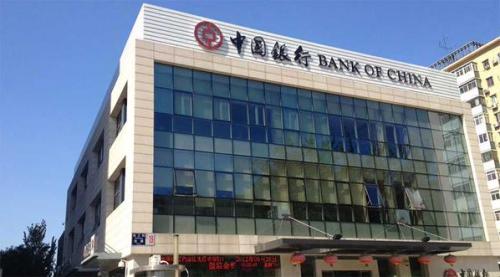The Chinese express in Latin America
While Panama faces problems with widening the Canal, the region observes China moving on two strategic fronts to open new inter-oceanic routes.
- Análisis

In Panama there is no assurance of the future stability of the government, nor are there any guarantees concerning the viability of widening the inter-ocean canal. President Juan C. Varela has not been able to stabilize the State following twenty years of bad government, made worse during the recent period presided over by Ricardo Martinelli (2009-2014). On the other hand, the Panama Canal, the mainstay of a national project, now appears bogged down in political and technical problems with no solution in sight. The administrator of the Panama Canal Authority (ACP) recently declared that he would have to decide between the use of the water of the River Chagres basin for human consumption, for more than 1.5 million Panamanians, or for allowing ships to move from one ocean to the other.
The traditional ports of the Panama Canal – at present under the administration of an Anglo-Chinese company – are in the midst of internal struggles with Panamanian companies for the control of neighborhoods bordering on the inter oceanic waterway. Moreover, there are constant threats by the consortium that is building new locks to increase the capacity of the canal. The construction group, whose survival is in question, is two years behind schedule and is asking for the equivalent of 2.5 billion US dollars for cost overruns. Planning around the Panama Canal and of the surrounding areas is close to collapse.
The directors of the APC appear to be more preoccupied with business opportunities with present and future partners than with getting their house in order. Their members have not yet made any statements concerning the supposed shortage of water announced by the administrator, nor have they taken a firm stand in the face of the building consortium threats. Moreover, news stories published in the media indicate that some of them have personal interests in the new ports of Rodman and Corozal, close to the port of Balboa.
While successive governments are preoccupied with business deals over relative advantages created by the transfer of the Canal from US to Panamanian control in 2000, the region observes China moving on two strategic fronts to open new inter-oceanic routes. On the one hand, Peking has committed 40 billion US dollars for building the Nicaraguan canal. On the other, there is the less-known project of the Transcontinental Brazil-Peruvian railway. This will pass through the mythical Amazonian jungle and the cordillera of the Andes, uniting the Pacific and the Atlantic oceans. It will also be financed in large part by China.
According to calculations, each train will haul some 200 freight cars of 100 tons each. The train will be a modern miracle of technology, but also, a bomb that could endanger the environment of a vast zone of our planet. It will be over four thousand kilometres long. The train will start at Piura, on the Pacific coast, and will go through Abra de Porculla, an Andean pass 2,200 meters above sea level and will cross the Peruvian frontier to Porto Vehlo in Brazil. It will continue to the port of Açú, near Río de Janeiro, on the Atlantic coast.
The Chinese Prime Minister Li Keqiang met recently with President Ollanta Humala, in Lima, and Dilma Rousseff in Brasilia. The South American power is one of the most important sources of iron ore and soya for China. China exports manufactured goods to Brazil. Peru serves as an intermediary, although it can also take advantage of the new railway to export prime materials for Brazil's powerful agro-industry. President Humala believes that the "...project will consolidate the geopolitical position of Peru as a natural port into South America". According to the Peruvian analyst Raúl Mendoza, "...the three countries have something to gain, but the alliance to promote the train has just started".
While China plays its cards in Latin America, the Panamanian authorities (and the economic groups that lurk behind them) sit and wait for "crumbs" from the intense commercial movement already under way to fall from heaven. They are the classic "rentiers", unable to coordinate a development plan that would allow the country to move forward and become a regional centre of production. The Chinese express is moving through the continent, crossing cordilleras, dividing isthmuses and extracting wealth. If the "rentiers" fail to mobilize the enormous productive forces of the Panamanian people, other groups will have to take on this task.
(Translated by Jordan Bishop for ALAI)
11/06/2015
- Marco A. Gandásegui, junior, professor of Sociology in the University of Panama and researcher associated with the Centro de Estudios Latinoamericanos Justo Arosemena (CELA)
www.marcoagandasegui14.blogspot.com
Del mismo autor
- La pandemia no es el fin del capitalismo 23/04/2020
- Hay que masificar las pruebas contra un virus clasista 19/04/2020
- ¡Qué falta hacen los Comités de Salud de J. Renán Esquivel! 09/04/2020
- La desigualdad social y la desconfianza contribuyen a la epidemia 02/04/2020
- Hacen falta más ‘pruebas’ para ‘suprimir’ el coronavirus 26/03/2020
- La crisis del capitalismo y el coronavirus 19/03/2020
- Urge una movilización general para atacar el corona-virus 12/03/2020
- Se necesita liderazgo y transparencia para enfrentar el corona-virus 05/03/2020
- EEUU veta relaciones entre Panamá y China 27/02/2020
- Roberto Arosemena, sus ideas perduran y sus luchas continúan 20/02/2020
